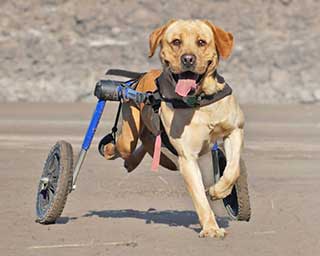
A cat wheelchair, also known as a pet cart, is a device designed to help cats with mobility issues stay active and independent. It is typically a wheeled cart with a harness attached to it for the cat’s body and legs to rest in. These wheelchairs are designed to help cats that are paralyzed, have suffered an injury, or have a chronic illness, such as arthritis, remain mobile and enjoy life as much as possible.
Cat wheelchairs come in a variety of sizes and styles, allowing you to choose one that best suits your cat’s individual needs. They are typically made from lightweight and durable materials, such as aluminum, and they are adjustable to ensure your cat can comfortably use the wheelchair over time. Depending on the type of cat wheelchair you choose, some models may require assembly, while others may come ready to use.
Cat wheelchairs can help your furry friend stay active and independent, allowing them to explore their world with less difficulty. They can also help to improve their quality of life by making it easier for them to move around, whether it’s in the house, out in the garden, or even on walks.
Using a cat wheelchair can be a big adjustment for both you and your pet, so it’s important to take your time and be patient. Both you and your cat will need to get used to the device and learn how to use it properly. It may also take some time for your cat to become comfortable in the wheelchair, so be sure to provide plenty of love and support during this process.
A cat wheelchair is an excellent way to help cats that struggle with mobility issues stay active and independent. By providing them with the support they need, they can continue to enjoy life to the fullest.
